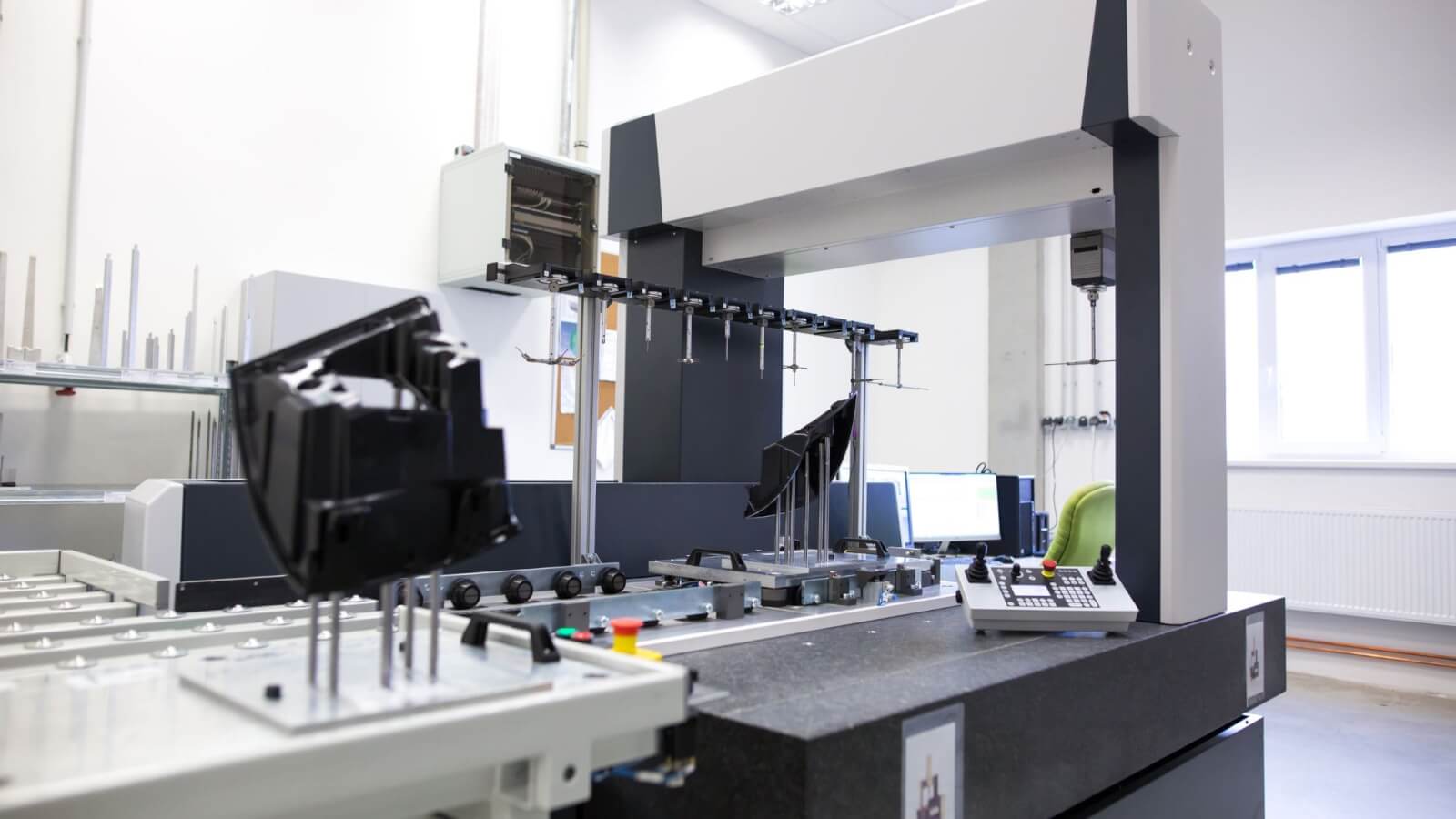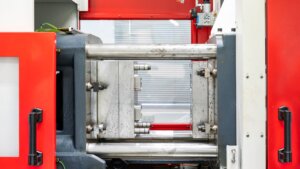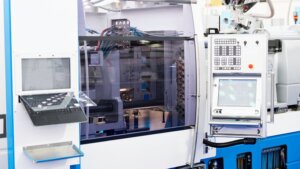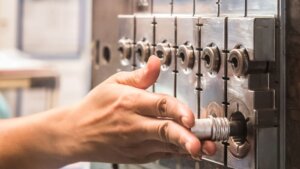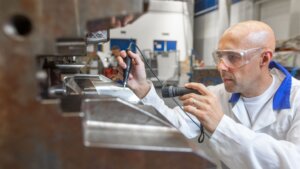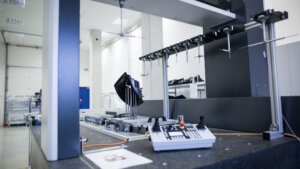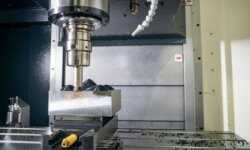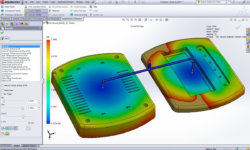The world of manufacturing was forever changed with the advent of injection molding, a groundbreaking technique crucial in shaping today’s plastic production landscape. This article delves into the rich history and transformative impact of injection molding, tracing its roots and exploring its pivotal role in the modern plastics industry.
What Is Injection Molding?
Injection molding is an important industry manufacturing process, characterized by its efficiency and versatility. It involves the precise injection of molten plastic material into a mold, where it cools and solidifies into the desired shape.
Plastic injection molding technology, integral to creating many plastic products, from household items to complex automotive components, signifies a major leap in the manufacturing processes. The injection molding machine, a marvel of engineering, plays a critical role in this transformation, enabling mass production of plastic components with consistent quality and intricate designs.
What is the History of Injection Molding?
Injection molding history is a narrative of ingenuity and evolution, marking its significance in the plastic injection molding industry. This transformative process, which began in the 19th century, revolutionized how plastic products are created, influencing numerous sectors, from automotive technology to consumer goods.
When was Injection Molding Invented?
The inception of injection molding can be traced back to the late 19th century. It emerged as an answer to the growing demand for producing plastic materials efficiently. The development of the first injection molding machine marked a significant change in the manufacturing processes, allowing for the mass production of plastic components.
How Did Injection Molding Begin?
The beginning of injection molding was marked by the invention of machines capable of producing small, yet complex items. The first molding machine, though rudimentary compared to today’s standards, laid the foundation for a revolutionary production process. It facilitated the transition from labor-intensive methods to a more automated, efficient approach.
- The Advent of the First Injection Molding Machine: A turning point in the plastic injection molding process, enabling the efficient creation of plastic products.
- World War II Era Developments: The war period accelerated advancements in injection molding technology, crucial for producing high-quality parts for war applications.
- Post-War Industrial Revolution: This era witnessed plastics gradually popularized, with injection molding at the forefront of this manufacturing revolution.
- Technological Innovations: Introduction of screw injection machines and other advancements, significantly enhancing the injection molding process.
Who Invented the First Injection Molding Machine?
The first injection molding machine was invented by John Wesley Hyatt and his brother Isaiah. Their invention, primarily aimed at replacing ivory in billiard balls, eventually led to the development of a machine that could produce parts with consistency, marking a pivotal moment in the history of plastic injection.
What Has Been the Evolution of Injection Molding Technology?
The evolution of injection molding technology stands as a testament to human ingenuity in the plastics manufacturing industry. This journey, marked by significant improvements, has transformed the way plastic products are created and shaped the modern plastics industry.
- Development of the Screw Injection Machine: Revolutionized the plastic injection molding process, offering improved control over the speed and consistency of the molten plastic.
- Introduction of Computer-Assisted Manufacturing: Enabled precise control over the injection molding process, enhancing the quality of plastic components.
- Advancements in Plastic Materials: Innovations in materials such as cellulose acetate and polyvinyl chloride expanded the applications of injection molding.
- Micro Injection Molding: A significant leap in manufacturing processes, allowing for the production of extremely small and precise plastic parts.
What Were the First Injection Molding Machines Like?
The first injection molding machines, introduced in the late 19th century, were relatively simple devices. They primarily consisted of a basic plunger mechanism that injected molten plastic into a mold.
These machines laid the groundwork for the plastic injection molding dates back to an era where manufacturing was transitioning to more automated methods.
Despite their simplicity, these machines represented a huge leap forward in the plastic production process, enabling the creation of a variety of plastic products with unprecedented efficiency.
How Has Injection Molding Machinery Evolved?
Over the years, injection molding machinery has seen substantial evolution. From the initial plunger-based designs, the technology moved towards more sophisticated systems, such as the screw injection molding machine.
This evolution was driven by the need for greater precision, speed, and control in the injection process.
Modern injection machines now feature advanced components and features like heated cylinders and programmable setups, allowing manufacturers to produce high-quality plastic and rubber parts with intricate designs and consistent quality.
When did Metal Injection Molding Begin?
Metal injection molding began as an offshoot of the traditional plastic injection molding process, emerging prominently in the latter half of the 20th century.
This technique combined the versatility of plastic injection molding with the strength and durability of metal, opening new avenues in manufacturing sectors like automotive technology and steel production.
Metal injection molding allowed for the creation of various forms of complex metal parts with a level of precision and efficiency that was not achievable with traditional metalworking tools and processes.
When Did Injection Molding Become Widely Recognized?
Injection molding gained widespread recognition post-World War II, marking a significant era in the plastics manufacturing industry. This period saw a dramatic increase in the demand for mass-produced materials, which injection molding was ideally suited to meet.
The versatility and efficiency of injection molding machines played a crucial role in this growth, as they could be developed to produce high volumes of lightweight plastic components quickly and cost-effectively.
What Factors Contributed to the Rise in Popularity of Injection Molding?
Several key factors contributed to the popularity of injection molding:
- Technological Advancements: The development of more advanced injection molding machines, such as the screw injection machine, significantly enhanced the quality and efficiency of plastic production.
- Economic Efficiency: Injection molding offered an affordable alternative for mass production, particularly important in the post-war industrial revolution. Its ability to produce multiple parts simultaneously led to tremendous cost benefits.
- Versatility in Materials and Applications: The adaptability of injection molding to various plastic materials and its application in different industries, including automotive technology and consumer goods, broadened its appeal.
- Global Supply Chain Integration: Injection molding became integral to global supply chains, enabling the large-scale manufacturing of plastic products and components, which were increasingly in high demand worldwide.
How Has Injection Molding Impacted Manufacturing and Product Design?
Injection molding has had a profound impact on both manufacturing processes and product design:
- Manufacturing Processes: Injection molding revolutionized the manufacturing sector by introducing a more efficient, automated system. The process allows for the consistent production of high-quality parts, significantly reducing manufacturing time and costs.
- Product Design: The flexibility of injection molding in terms of shapes and sizes has expanded the horizons of product design. Designers now have the freedom to experiment with complex and innovative designs that were previously impossible or too costly to produce.
- Material Innovation: The evolution of injection molding has also driven advancements in plastic materials. The development of new, more durable, and sustainable plastics has further expanded the possibilities of product design and manufacturing.
- Influence on Other Industries: Injection molding’s influence extends beyond the plastics industry. Its principles and technologies have been adopted in other areas, such as metal production and electronics, leading to more sophisticated and diverse manufacturing capabilities.
How Does Modern Injection Molding Work?
Modern injection molding is a sophisticated process that has evolved significantly from its early days. It involves several key stages, each critical to producing high-quality plastic components.
- Melting the Plastic Material: Plastic pellets are fed into the injection molding machine where they are heated until they reach a molten state.
- Injecting the Molten Plastic: The molten plastic is then injected into a mold at high pressure, ensuring the material fills the entire cavity.
- Cooling and Solidifying: Once injected, the plastic is allowed to cool and solidify, taking the shape of the mold.
- Ejecting the Finished Product: After the plastic has solidified, the mold opens, and the finished product is ejected, often assisted by a robotic arm for efficiency.
What Are the Current Innovations in Injection Molding?
Recent technological breakthroughs have significantly enhanced the capabilities of injection molding:
- Advanced Material Use: Innovations in plastic materials, including the development of bioplastics and composite polymers, are opening new possibilities for injection molding applications.
- Precision Control Systems: Modern injection molding machines are equipped with sophisticated control systems, allowing for more precise and efficient manufacturing.
- Automation and Robotics: The integration of automated systems and robotics has streamlined the production process, improving consistency and reducing labor costs.
- Micro Molding: This technology allows for the production of extremely small and intricate manufactured parts, expanding the application scope of injection molding.
What Are the Future Trends and Potential Innovations in Injection Molding?
The future of injection molding promises further advancements and innovations:
- Sustainability Focus: There is a growing trend towards more sustainable practices, including the use of recycled materials and the development of more energy-efficient machines.
- Smart Manufacturing: The integration of IoT and AI technologies is likely to advance, leading to smarter, more connected manufacturing processes.
- Material Science Advancements: Ongoing research in material science could lead to the development of new polymers with enhanced properties, further expanding the potential of injection molding.
- Customization and Flexibility: Future developments may focus on increasing the ability to produce more customized and varied products without significant cost increases.
Is Injection Molding Adapting to the Digital Age?
Injection molding is indeed adapting to the digital age, embracing technologies like AI and IoT:
- AI Integration: AI algorithms are being used to optimize the injection molding process, predict maintenance needs, and improve product quality.
- IoT in Monitoring and Control: IoT devices are increasingly used for real-time monitoring and control of injection molding machines, enhancing operational efficiency and predictive maintenance.
- Digital Twins: The use of digital twins, or virtual replicas, allows plastic injection molding manufacturers to simulate and optimize processes before actual production.
Conclusion
Injection molding continues to be a vital process in the manufacturing world. Its evolution from a simple molding technique to a sophisticated, digitally-integrated process showcases its adaptability and significance.
With ongoing technological advancements and a growing focus on sustainability and efficiency, injection molding is set to remain a cornerstone in the production of a vast array of products, driving innovation and efficiency in the manufacturing sector.
FAQs
Who is the Father of Injection Molding?
James Watson Hendry is often regarded as the father of modern injection molding. His patented invention of the screw injection molding machine revolutionized the industry, offering greater control over the injection process and quality of the final products. Hendry’s contributions significantly impacted the plastics manufacturing industry, setting the stage for future innovations.
